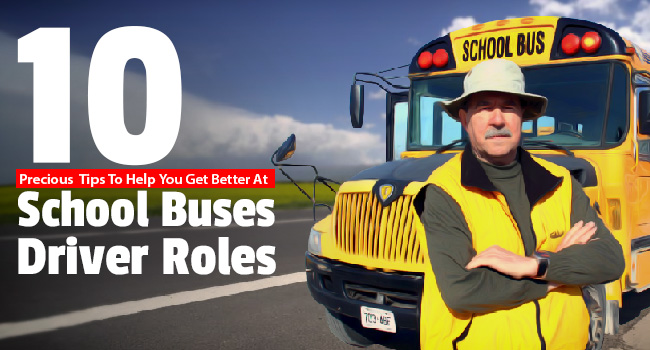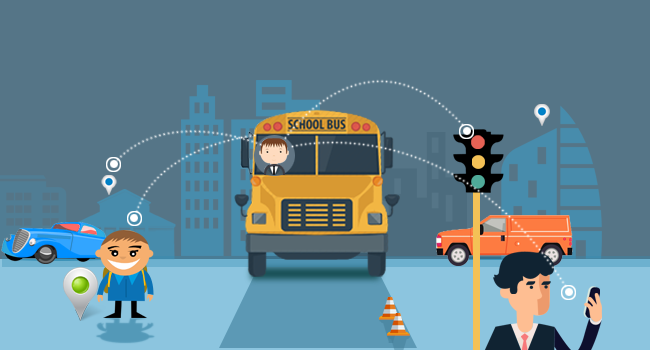Regional rules require that students with special needs should be transported only by those who are specifically trained to provide the service. This is because the whole process is quite a difficult one which involves many different activities.
Here are some of the activities:
• Loading and unloading students using specific procedures
• Securing student using a wheelchair
• Knowledge of operating specific equipment
• Proper communication with students and concerned people
• Evacuation of students in an emergency
• Knowledge of regional and state laws pertaining to the transport of students with special needs or disabilities, etc.
Every driver and bus attendants should have these sort of training so that they can transport students with special needs in a secured way and with utmost care to and from school.
Below are 15 tips for school bus drivers to transport students with special needs.
- The first point that you can start with is you can search for ‘transporting students with disabilities’ in Google. The list that is thrown up would contain many websites that can provide help in this direction.
- Different states have published their own training manuals on the web. You can use any of these to define a starting point for your training and design program that suits your needs.
- One useful resource where you can spot an effective special needs driver training program is the NST specifications and Procedures manual. This can be downloaded from www.ncstonline.org.
-
Your training guidelines for drivers transporting students with disabilities should be based on those that are dictated by your district policies.
They should also be based on the regional and state legislation on the matter. This would tell the drivers and attendants the need for this kind of training.
- It is necessary to familiarize the drivers and attendants with the characteristics that pertain to the different disabilities so that they are able to identify them easily. This is likely to make the training more effective for them.
-
Companies that manufacture equipment such as the wheelchair that is required to transport children with special needs provide training on different aspects such as loading the wheelchair on to the bus and securing it.
It is essential to subject the drivers and attendants to such training every time whenever there is a new release of the product and/or its securement systems to keep them updated.
- The NHTS Administration has published many manuals to describe the use of child restraint systems in school buses. It is a good idea to become familiar with these during the driver and attendant training sessions.
- Your special education department is likely to contain resources that teach drivers and attendants how to control the behaviour of children with special needs during school bus rides.
- For drivers and attendants to become good at emergency evacuation procedures, it is important to conduct mock drills at timely intervals with help from the local fire department. This would provide them with first-hand knowledge as to how children with special needs have to be handled during emergency situations.
-
Drivers and attendants have to be taught to keep specific information regarding students with special needs confidential. They have to be aware of the student’s medical needs if any and should be subjected to sensitivity training to best appreciate the condition of the student.
These are important topics that have to be present in the training manuals. At this stage, the drivers and attendants have to be reasonably familiar with the line of practice that is followed in the specific district.
- Every training session should be documented for future reference. These documents should find an appropriate place in the drivers’ and attendants’ training files.
-
The training program should be one such that it draws from the experience of the training veterans in the field of transportation of students with special needs.
This does not mean that the new trainers can be left out. They will bring in their own expertise to the table. They should be asked to train the drivers and attendants about the requirements they envision in the future for transportation of students with special needs. As of now, there is a lot of precious information in this field that is waiting to be shared.
-
It is important for drivers and attendants to remain updated about the latest procedure, best practices and incorporate new ideas and information.
Trained drivers and attendants should be readers of school publications that cover the needs of students with disabilities.
- To make the training more effective, it is the duty of the trainers to make the environment more conducive to learning. The learning environment should be professional for the best outcomes after the training sessions.
- Bus drivers and attendants should be aware of student medical emergencies that may occur. They will have to be trained to pull over and call 911, stay calm, stay with the student during the medical emergency, lend emotional support to the student and correctly document the incident.
Conclusion
Bus drivers and attendants that transport children with disabilities shoulder a great responsibility. It can be done safely and effectively only when the drivers and attendants carry out the job in a very professional manner.
For this, the training has to be very effective. Drivers and attendants that are well trained provide the safest means of transport for children with special needs.







